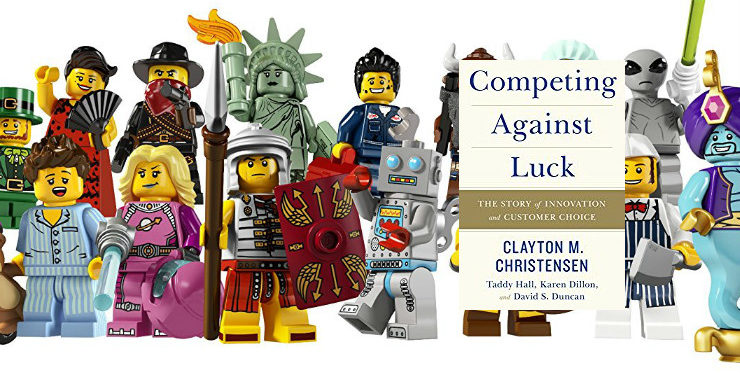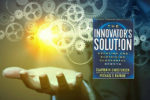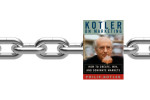Progress, Not Products

Competing Against Luck: The Story of Innovation and Customer Choice by Clayton Christensen
Use empathy and active listening to discover “jobs to be done”, the progress customers want to achieve in specific circumstances in their lives. Jobs provide the causal factor to explain why customers choose one product over another. Design the experience you deliver around your customer’s job and your competitors will find it hard to copy. Finding jobs allows you to break free of the “innovation relies on luck” pattern.
The title of Competing Against Luck refers to the idea that success with innovation is frequently characterized as primarily governed by luck. Christensen outlines a better approach, “jobs to be done”, which takes innovation out of the realm of luck.
Christensen’s famous milk shake case study (video below) resulted in the jobs to be done theory. The realization that people “hire” milkshakes for different “jobs” crystalized the idea that understanding why someone is using a product or service is more important than who they are. Along with Christensen, Bob Moesta is a key figure in jobs to be done theory.
Customers don’t buy products or services; they pull them into their lives to make progress
Christensen observes that a customer’s attributes do not cause them to buy a product or service. It’s the circumstances the customer finds herself in, the “job to be done”, that causes her to buy a product or service. The data that is typically used in product development is focuses on customer or product attributes and thus misses the core job that the customer is trying to complete.
Three attributes of jobs to be done
Jobs have three important attributes: progress, circumstance, and complexity. A “job” represents movement towards a goal. It occurs in a circumstance of someone’s life; context is critical to its definition. Jobs have functional, social, and emotional dimensions.
We define a “job” as the progress that a person is trying to make in a particular circumstance.
A job is always a process to make progress, it’s rarely a discrete event.
Christensen stresses that jobs are “not necessarily just a ‘problem’ that arises” because progress “represents movement toward a goal or aspiration.” To be a successful innovator requires enabling a customer to achieve their “desired progress, resolve [their] struggles, and fulfill unmet expectations.”
Jobs are not “needs”. Christensen defines “needs” as “ever present and generic”; for example, “I need to eat”, which is almost always true, and “I need to feel healthy”, which is too general to help innovators bring a solution to customers. He says “simply needing to eat isn’t going to cause me to pick one solution or another”. This is why the specific circumstances of a job are so important. The key to a job is that it must cause a person to pull a product into their lives.
Finding jobs to be done
Understanding jobs is about clustering insights into a coherent picture, rather than segmenting down to finer and finer slices.
Christensen provides a handful of specific questions to uncover jobs when when talking to customers. Asking these questions provides the critical context required to find the jobs the person is trying to get done.
– what progress is the person hoping to achieve?
– what are the circumstances around their struggle?
– what obstacles are getting in the way of the person making their desired progress?
– is the person satisfied with less than optimal solutions?
– how does the person define what “quality” means in terms of a better solution?
It’s important to note that we don’t “create” jobs, we discover them. Jobs themselves are enduring and persistent, but the way we solve them can change dramatically over time.
Thinking about jobs frequently leads companies to broaden their perspective on what they offer. Ford, for example, thinks of itself as a “mobility” company, not just an automotive company. Similarly, jobs based thinking exposes a wide variety of competitive offerings: Netflix understands that it is competing against video games, board games, and reading books.
Christensen offers some techniques to discover jobs: examining struggles and problems in your own life; identifying situations where “non-consumption” is occurring; situations where customers are using awkward or less than optimal workarounds; and times when products are used in unusual ways. Each of these points to a job that is not being satisfied completely. When looking for jobs in the field and in the lives of your customers, remember that the emotional dimension of the job is equally, if not more, important than the functional aspect.
Once you understand the customer’s Job to Be Done, it brings into sharp relief the true competition you face to be hired.
Listening to Customers
Your customers may not be able to tell you what they want, but they can tell you about their struggles.
Christensen suggests storyboarding customer conversations in order to discover the underlying context, motivations, attitudes, and behaviors that drive customers to hire one solution or another. A deep understanding of customers struggles yields stories and conversations (qualitative data) that is just as rich and valuable as quantitative data is assumed to be. One of Christensen’s core messages is that all data is biased and is prone to mis-interpretation. Empathy and close relationships with your customers will yield the deep insights required to discover jobs to be done.
Examples of jobs to be done
Christensen provides many case studies of companies which discovered jobs to be done through asking the right questions and listening to the stories their customers told.
Airbnb – an affordable, authentic local experience which enables people to participate in events and isn’t provided by cookie-cutter, one-size-fits-all chain hotels
Snapchat – teenagers communicating with each other without intervention by nosy parents
Facebook – take a break from work, relax for a few minutes while not thinking about work, and hang out around a virtual water cooler
Southern New Hampshire University (SNHU) took a close look at who was hiring them do what and discovered that they assumed they were in the business of providing coming-of-age experiences to high school graduates looking for a standard college education. After examining their graduates and the people who were contacting them, SNHU learned that the job many people were asking them to do was provide an efficient way to acquire skills that would lead to a better job. Moreover, the new job they identified was being hired by people who were not in their late teens. These people were looking for convenience, customer service, job certifications, and fast learning. After organizing their processes and entire business around this job, SNHU experienced rewarding growth. SNHU asked three key questions on their way to finding the new job: 1) what are the experiences customers seek in order to make progress?; 2) what obstacles must be removed?; and 3) what are the social, emotional, and functional attributes of the job?
Organizations that lack clarity on what the real jobs their customers hire them to do can fall into the trap of providing one-size-fits-all solutions that ultimately satisfy no one.
Making jobs to be done work
Jobs Theory changes not only what you optimize your processes to do, but also how you measure their success. It shifts the critical perspective criteria from internal financial-performance metrics to externally relevant customer-benefit metrics.
Once you’ve found a job, it’s time to rally your entire organization around it. One of the most powerful things about jobs to be done is their ability to focus teams on what’s most important to the customer. Aligning processes to help customers accomplish their jobs adds tremendous power to the offering that goes beyond the product and its features. Metrics should be chosen which measure completion of your customer’s job rather than internal metrics which measure your organizational outcomes. Focusing on the job throughout the organization enables the creation of an experience that cannot be duplicated by competitors. Although your competitors can copy your features, they cannot copy the experience you create if your entire organization, processes, and metrics are tied to the core job your customers are hiring you to do.
The pinnacle of jobs to be done development is a “purpose brand”, one that is synonymous with the job it is being hired to do. A purpose brand is the first name that comes to mind when a person has that job to be done–they immediately associate the job with the brand because the brand is so congruent with their needs and the entire experience has been designed around the fulfillment of the job.
More on Jobs To Be Done
Know Your Customer’s “Jobs to Be Done”
Competing Against Luck articulates Christensen’s jobs to be done theory. The title of the book comes from the idea that innovation is a crap shoot, largely dependent on luck. Christensen challenges this assertion and writes that focusing on a “job” is the way out of the “roll of the dice” innovation conundrum. Product development traditionally focuses on customer and product attributes rather than on the “job” the customer is “hiring” a product to do for them.
A job is the progress that a person is trying to make in a specific set of circumstances. By focusing on the job, product managers can identify what is causes a person to choose one product or service over another (and in relation to doing nothing).
The first part of the book defines what a job is. The second part discusses case studies of companies which discovered jobs and provides techniques for uncovering jobs. The final chapters of the book focus on how to design the customer experience through aligning the organizational structure, processes, and metrics around the job to be done.





